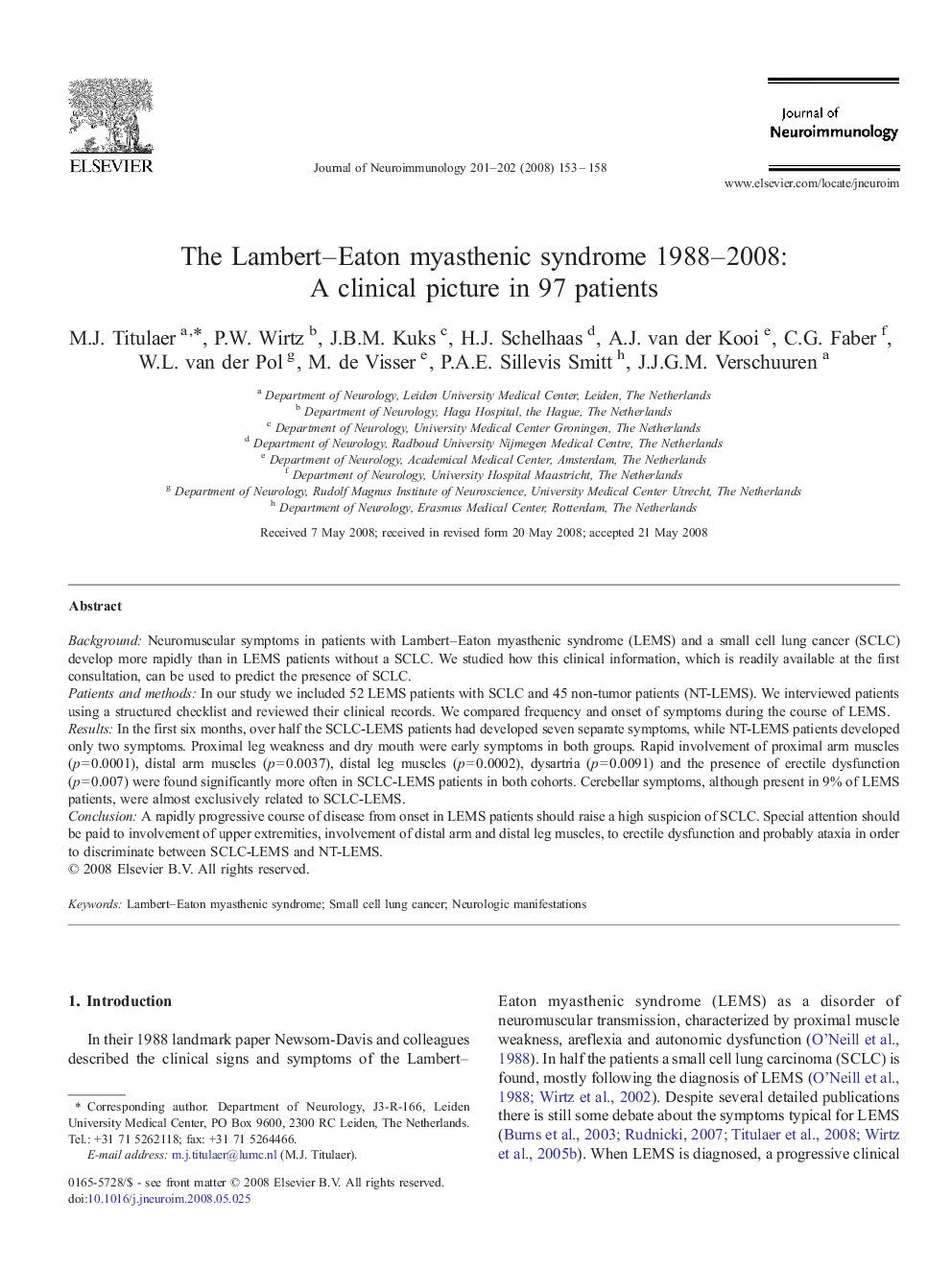| Article ID | Journal | Published Year | Pages | File Type |
|---|---|---|---|---|
| 3065172 | Journal of Neuroimmunology | 2008 | 6 Pages |
BackgroundNeuromuscular symptoms in patients with Lambert–Eaton myasthenic syndrome (LEMS) and a small cell lung cancer (SCLC) develop more rapidly than in LEMS patients without a SCLC. We studied how this clinical information, which is readily available at the first consultation, can be used to predict the presence of SCLC.Patients and methodsIn our study we included 52 LEMS patients with SCLC and 45 non-tumor patients (NT-LEMS). We interviewed patients using a structured checklist and reviewed their clinical records. We compared frequency and onset of symptoms during the course of LEMS.ResultsIn the first six months, over half the SCLC-LEMS patients had developed seven separate symptoms, while NT-LEMS patients developed only two symptoms. Proximal leg weakness and dry mouth were early symptoms in both groups. Rapid involvement of proximal arm muscles (p = 0.0001), distal arm muscles (p = 0.0037), distal leg muscles (p = 0.0002), dysartria (p = 0.0091) and the presence of erectile dysfunction (p = 0.007) were found significantly more often in SCLC-LEMS patients in both cohorts. Cerebellar symptoms, although present in 9% of LEMS patients, were almost exclusively related to SCLC-LEMS.ConclusionA rapidly progressive course of disease from onset in LEMS patients should raise a high suspicion of SCLC. Special attention should be paid to involvement of upper extremities, involvement of distal arm and distal leg muscles, to erectile dysfunction and probably ataxia in order to discriminate between SCLC-LEMS and NT-LEMS.
